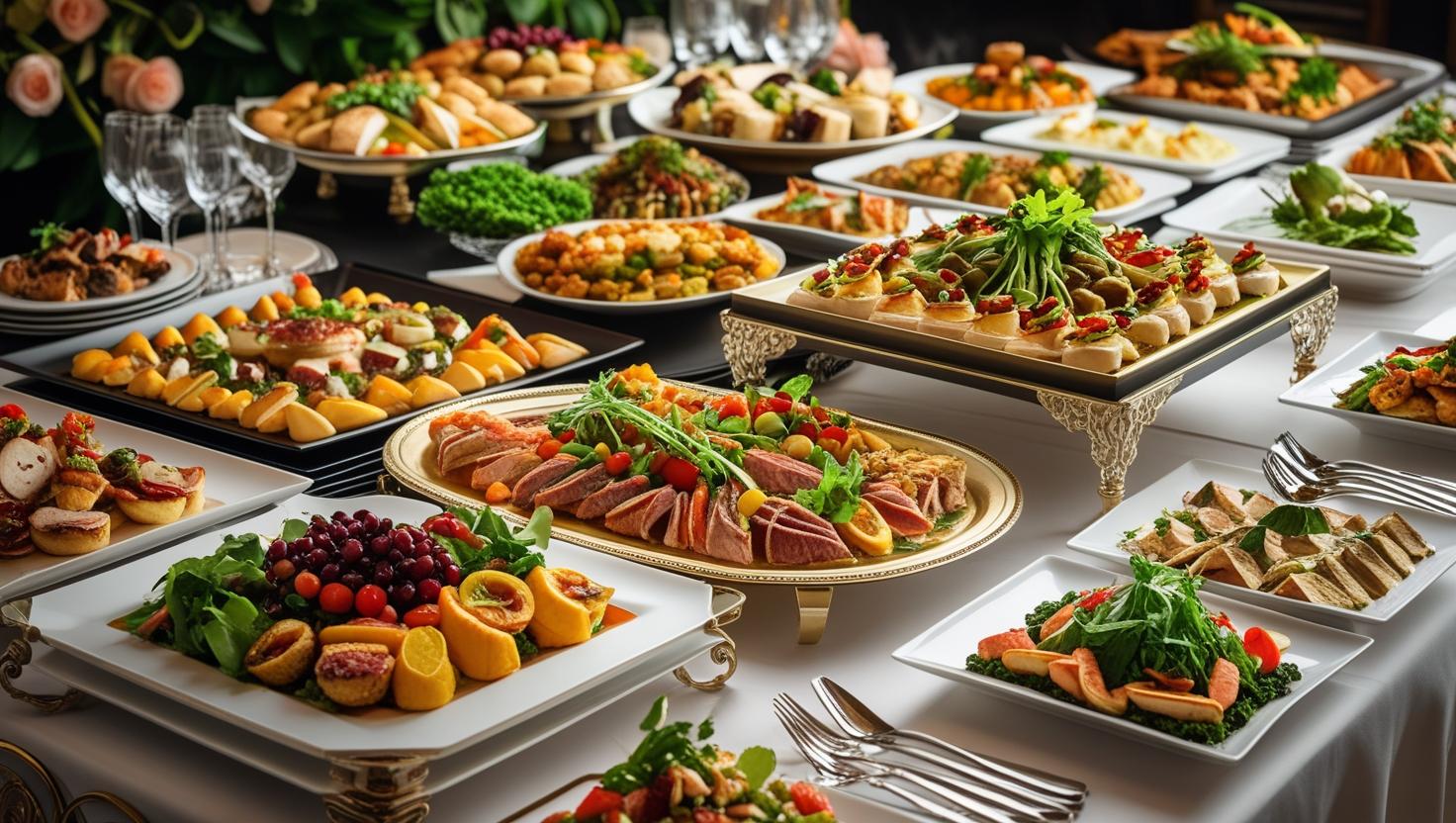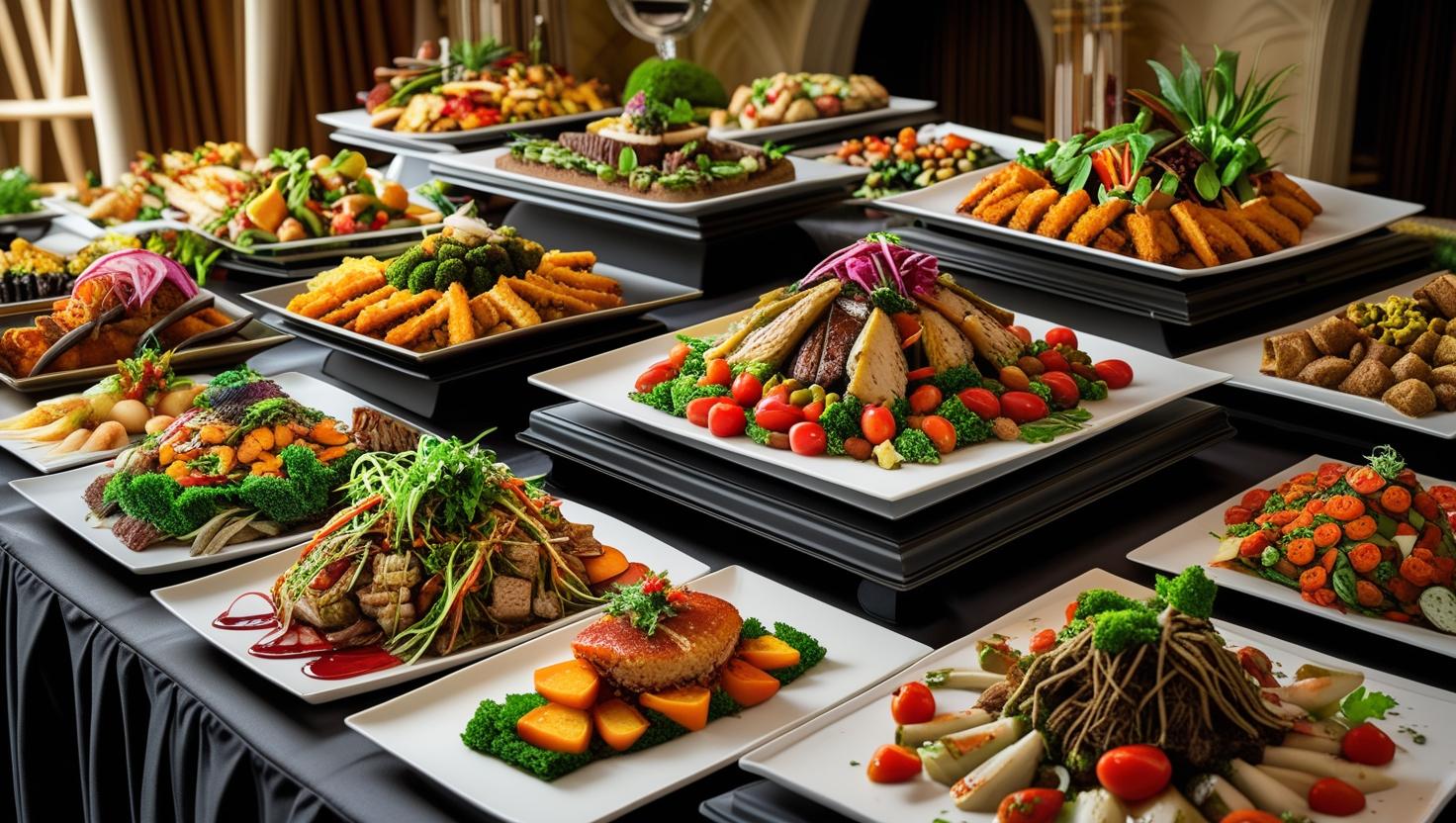Introduction
Whether you’re hosting a wedding, a corporate event, or a cozy backyard party, the success of any gathering often hinges on one critical detail: the food. In today’s experience-driven world, your choice of catering can set the tone, leave lasting impressions, and even become the talk of the night.
With countless food catering options available — from gourmet buffets to live cooking stations — it’s easier than ever to create a dining experience that complements your event’s style, theme, and guest preferences.
This article explores the most delicious, creative, and crowd-pleasing catering options, helping you make the right choices based on your budget, event type, and personal taste.
1. Why Great Catering Matters
Food isn’t just a necessity—it’s an experience. Quality catering:
- Enhances the ambiance and theme of your event
- Leaves a lasting impression on guests
- Reflects thoughtfulness and attention to detail
- Brings people together over shared meals
Whether it’s a casual buffet or a formal plated dinner, your food choices reflect the tone of your event and your hospitality as a host.
2. Types of Catering Services
Understanding the different types of catering helps you align with your event goals.
| Catering Type | Best For | Features |
|---|---|---|
| Full-Service Catering | Weddings, formal events | Setup, service, clean-up included |
| Drop-Off Catering | Corporate lunches, casual events | Food delivered ready-to-serve |
| Buffet Catering | Large gatherings, informal parties | Self-service or attended stations |
| Food Truck Catering | Outdoor events, festivals, casual settings | Mobile kitchen, themed cuisine |
| Cocktail Catering | Networking events, galas | Appetizers, drinks, minimal seating |
| Private Chef Services | Intimate dinners, VIP occasions | Custom meals, plated service |
3. Factors to Consider When Choosing a Catering Option
To impress your guests, you’ll need more than just tasty dishes. Consider these key elements:
- Guest Count: Will affect portions and staffing needs.
- Event Type: Formal dinners require different setups than backyard BBQs.
- Venue Limitations: Check for kitchen access, space, and restrictions.
- Theme & Ambience: Align food style with the event’s vibe.
- Budget: Factor in hidden costs like servers, rentals, or gratuities.
- Dietary Needs: Include vegetarian, gluten-free, or halal options.
4. Popular Catering Styles to Wow Your Guests
Buffet-Style Catering
Perfect for large events, buffets offer variety and flexibility.
Advantages:
- Encourages mingling
- Customizable portions
- Cost-effective per head
Pro Tip: Incorporate themed stations like pasta bars or taco stands.
Plated Sit-Down Meals
Ideal for weddings or black-tie events. Each guest is served a pre-selected meal.
Advantages:
- Elegant presentation
- Controlled portions
- Smooth, organized service
Grazing Tables & Charcuterie Boards
A trending favorite for cocktail hours and bridal showers.
Features:
- Beautifully styled spreads
- Variety of meats, cheeses, fruits, and dips
- Instagram-worthy and easy to maintain
Live Cooking Stations
Add an element of entertainment and freshness.
Examples:
- Sushi rolling station
- Crepe or waffle bar
- BBQ grill or pizza oven
Food Truck Catering
Mobile, fun, and delicious.
Great For:
- Outdoor festivals
- Corporate gatherings
- Casual weddings or receptions
5. Delicious Menu Ideas for Every Occasion
Your menu should match your event’s energy. Here are some crowd-pleasing favorites by category:
Weddings
- Appetizers: Caprese skewers, mini crab cakes, bruschetta
- Main Course: Grilled salmon, herb-crusted chicken, vegan risotto
- Dessert: Mini cheesecakes, chocolate fountains, macaron towers
Corporate Events
- Breakfast: Bagel bar, yogurt parfaits, breakfast burritos
- Lunch: Sandwich platters, gourmet salads, taco bars
- Evening: Small bites, sliders, cocktail shrimp
Kids’ Parties
- Finger Foods: Chicken nuggets, mini pizzas, fruit kabobs
- Sweet Treats: Cupcakes, cotton candy, cookies and milk shooters
Cultural or Themed Events
- Indian: Butter chicken, naan, samosas
- Mexican: Tacos, enchiladas, churros
- Italian: Pasta bars, tiramisu, bruschetta stations
6. Dietary Considerations and Special Requests
Being inclusive with your menu isn’t just thoughtful — it’s essential.
| Diet Type | Sample Dishes |
|---|---|
| Vegetarian | Stuffed peppers, falafel wraps, grilled veggies |
| Vegan | Lentil salad, jackfruit tacos, vegan cupcakes |
| Gluten-Free | Quinoa bowls, rice paper rolls, fruit platters |
| Halal | Grilled chicken, biryani, kebab platters |
| Kosher | Certified meats, dairy separation, kosher wine |
Tip: Label all dishes clearly and ask for dietary preferences in RSVPs.
7. Presentation Styles That Elevate the Experience

Food should look as good as it tastes. Here’s how presentation can wow guests:
- Use real greenery or flowers for table styling
- Tiered serving trays to add dimension
- Color-coded stations to indicate flavors or diets
- Themed utensils and plates (eco-friendly, rustic, elegant)
- Live garnishing for cocktails or desserts
Visual Tip: A well-lit charcuterie board with wooden boards and gold accents always photographs beautifully!
8. Hiring the Right Caterer: Tips and Questions
Choosing the right caterer is crucial to your event’s success.
Key Questions to Ask:
- Can you provide tastings?
- Do you have experience with my type of event?
- What’s included in your service (staff, cleanup, rentals)?
- Can you handle dietary restrictions?
- Do you provide licenses and insurance?
- What’s the cancellation policy?
Pro Tip: Read online reviews and ask for references.
9. Budget-Friendly Catering Without Sacrificing Taste
You don’t need a five-star budget to impress your guests.
Money-Saving Ideas:
- Opt for seasonal ingredients to cut food costs
- Choose brunch or lunch events instead of dinner
- Limit the menu to 2–3 main dishes
- Use disposable but elegant tableware
- Serve family-style meals rather than plated
| Cost Factor | Budget Tip |
|---|---|
| Staffing | Use buffet or self-serve options |
| Drinks | BYOB or serve signature mocktails |
| Desserts | DIY cupcake towers or cookie bars |
10. Final Thoughts
Delicious food is more than just a necessity — it’s a celebration of culture, creativity, and connection. Whether you’re planning a lavish wedding, a corporate mixer, or an intimate birthday party, the right food catering options can elevate your event from ordinary to unforgettable.
From elegant plated meals to interactive food stations, catering today is more personalized, inclusive, and impressive than ever. With thoughtful planning, smart budgeting, and a reliable team, you’ll serve more than just a meal — you’ll deliver an experience your guests won’t forget.
Frequently Asked Questions (FAQ)
Q1: What are the most popular food catering styles for weddings?
Buffet-style and plated meals are the most common, but food trucks and grazing tables are gaining popularity for casual or outdoor weddings.
Q2: How do I choose the best catering option for my event?
Consider your guest count, event type, budget, and dietary needs. Matching your catering style with the theme is also key.
Q3: What is included in full-service catering?
Full-service catering typically includes food preparation, setup, service staff, table settings, and clean-up.
Q4: Can catering companies accommodate allergies and special diets?
Yes, most reputable caterers offer vegetarian, gluten-free, halal, kosher, and other options. Always discuss needs during booking.
Q5: Is buffet or plated catering cheaper?
Buffets are generally more cost-effective and allow more variety, while plated meals offer elegance and portion control.
Q6: What’s a good per-person catering budget?
Depending on the menu and service, catering can range from $15–$100 per person. Budget-friendly options can go lower with drop-off services.
Q7: Do I need a license to hire a food truck caterer?
The food truck vendor should have all necessary permits and health certifications. Ask for documentation before booking.
Q8: How far in advance should I book my caterer?
For weddings or large events, 6–12 months in advance is ideal. For smaller parties, 1–3 months may suffice.
Q9: Are tasting sessions necessary?
Yes, tastings allow you to sample menu items, discuss presentation, and build trust with the caterer.
Q10: Can I negotiate with a catering company?
Many caterers are open to customizing packages or adjusting menus to meet your budget — just ask!
